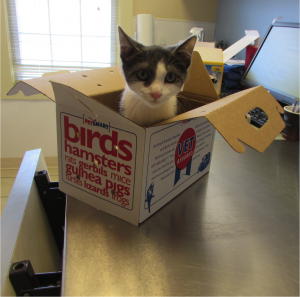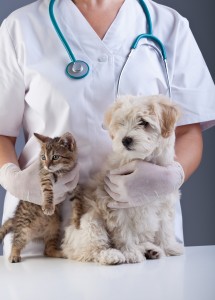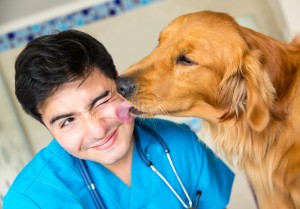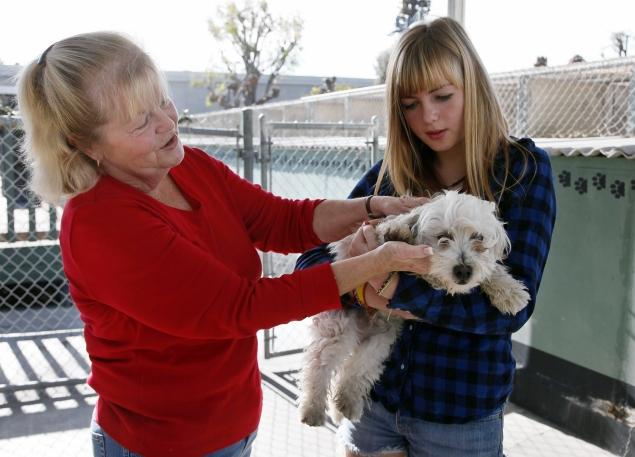How to Introduce a NEW DOG TO YOUR OTHER PETS
9 Easy Steps to Welcome a New Dog Home
Few things are as exciting as bringing home a new pet. At least for you. But how do you imagine the big introduction between your new dog and your resident pet(s)? Do you imagine handing out treats and name tags at your front door, resulting in happy munches and friendly woofs (or meows) as they bond instantly and forever. Cesar Millan would be so proud.
Then you blink twice and remember that you are living in reality and not in some ideal parallel universe. But reality can match your ideal, when you’re armed with these nine easy to follow steps, and a healthy dose of reality.
- Patience. Introducing your new dog to the pets already in your home is a process. To succeed, you must start with a plan and a promise – to yourself — to be patient. The process can take anywhere from a few days to a few weeks (and in extreme cases, a few months).
- Making a Match. To improve your chances of a happy blending of old and new, choose a dog as close as possible in temperament and activity level to the pets you already have. Dogs and cats are creatures of habit, and most dislike any disruptions to their daily lives and routines.
- Monitor Temperament. Some dogs are naturally more relaxed and more social than others. Some are more territorial and don’t enjoy sharing at all. Unhappy with the arrival of a newcomer, they may demonstrate their disapproval by fighting with the perceived “intruder” or by marking.
- Separate Corners. Allow your new dog to adjust to you and to his/her new surroundings by keeping him/her in a separate room with his/her bed, food, water and toys for several days. This is where having its own crate can be a lifesaver. And make sure to spend as much quality, comforting time with your new arrival as possible.
- Maintain Routines. Maintain your other pets’ regular routines – from feeding and pottying, to exercising, playing and together times. This will reassure them that nothing has changed.
- The Nose Knows. Since smells are of utmost importance to animals, get them used to each other’s scents as soon as possible. We’ve all witnessed how dog’s get to know each other through the tried and true smelling of the rear. It’s important they have the opportunity to smell each other, but it’s a good idea to keep the new dog on a leash at first, in case you need to take control quickly.
- All About Food. Another smell driver is food. Feed your resident pets and your new dog on either side of the door to his/her room, or crate, encouraging them to associate something pleasurable with one another’s smell. Once this has been successfully accomplished, walk your new dog slowly through your home, room by room, allowing him/her to become familiar with its sights, sounds and smells. Keep your other pets behind the closed door of his/her room to allow your new dog a sense of safety and privacy, while promoting a further exchange of scents between them. Repeat this several times a day for a few days.
- Good Sightlines. Next, use two doorstoppers to keep the door to your new dog’s room propped open just enough for all of the animals to see each other. Repeat this several times a day for a few days. But remember, when you leave your home, make sure your new dog in his/her room with the door closed, or secure in its crate.
- Reward and Correct. Armed with the tastiest treats and most tempting toys, you can expect sniffing, approaching and walking away. Reward good behavior with praise and treats, but discourage bad behavior by promptly separating the offending parties and gently, but firmly correcting them.
Hopefully, when you’re ready to make the “formal” introductions, your patience and your animals’ pre-preparations will pay off. And they will not only recognize, but also start to accept one another by what they see and smell.
Once again, patience is key. This too is a process, which may take time until the blending is successful, and your family is calmly and contentedly one.
If, however, certain problems persist, speak to your vet or consult a recommended animal behaviorist.
Some additional resources on introducing new dogs to your existing pet family may be found on Cesar’s Way Blog and the Humane Society.






 What inspired you to begin volunteering and fundraising?
What inspired you to begin volunteering and fundraising?





